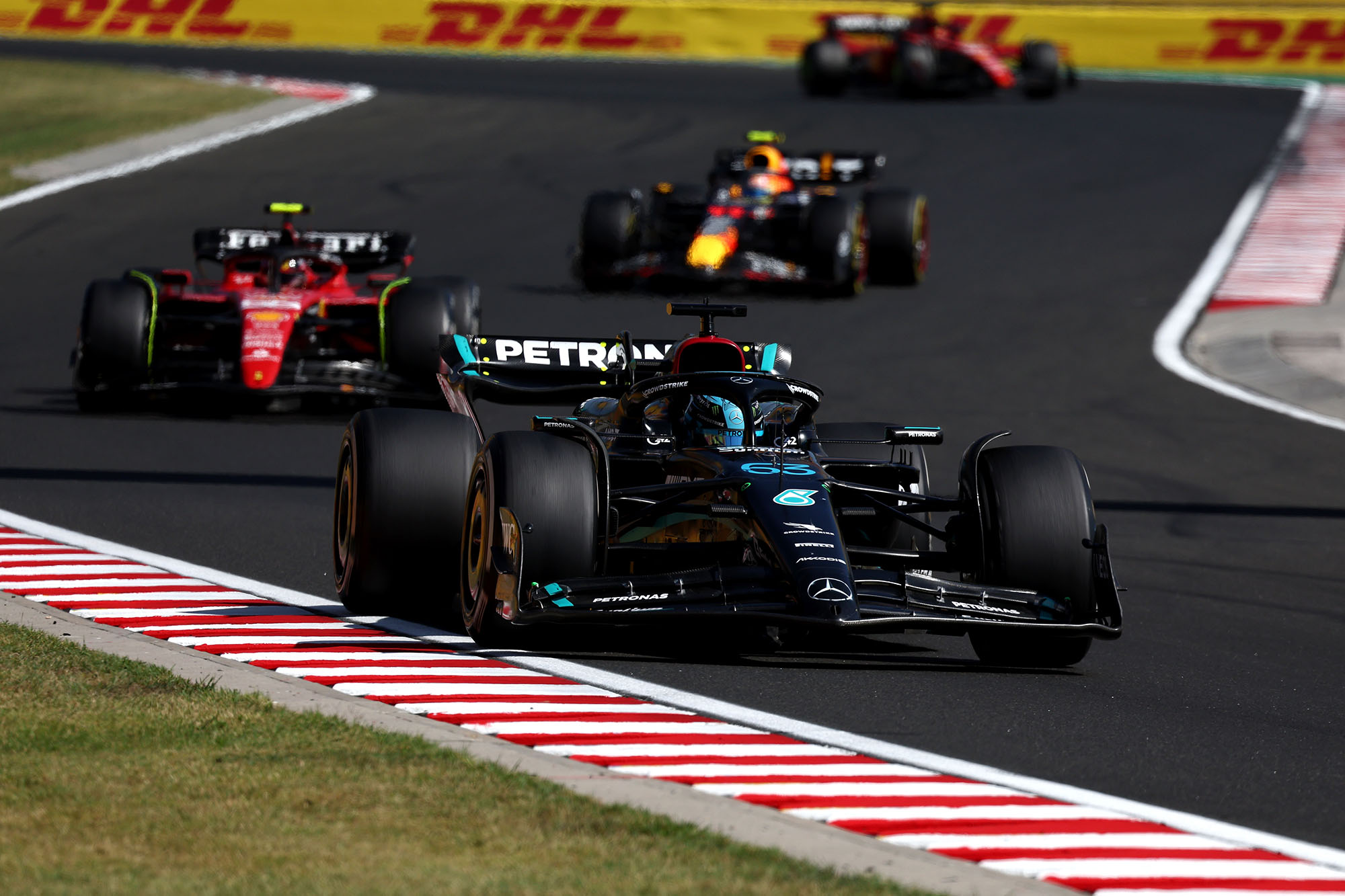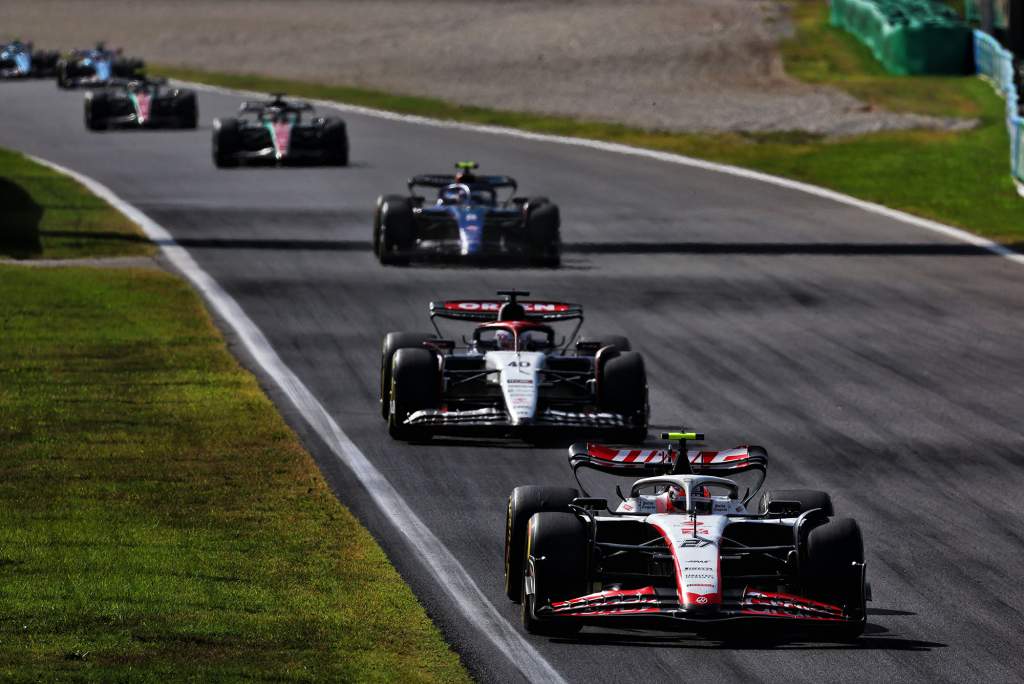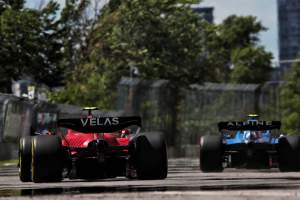Up Next

The FIA plans to make rule tweaks in 2025 to improve the ability of Formula 1 cars to follow closely after complaints that this situation had worsened again.
While the technical regulations would remain fundamentally the same given the major overhaul coming in 2026 around the new F1 power units – when cars are set to be a little smaller and lighter and run more adjustable aero – the modifications for ’25 would be specifically to tweak the wake characteristics of the cars by focusing on areas that have been found to be particularly problematic under the current rules.
The FIA single-seater director Nikolas Tombazis revealed the intention for rule changes in 2025 in an interview with motorsport.com Italy.
He confirmed that the complaints of drivers that it has gradually become more difficult to follow as cars have evolved are accurate and that while making changes for 2024 is not possible when design work on the new cars is already well advanced, adjustments will be introduced for the following year.
“If we take the 2021 F1 cars, based on being two lengths from the car in front, they were losing more than 50% of the [aero] load,” Tombazis said.
“With the 2022 single-seaters, there was only a 20% reduction in load. But now we are at about 35%. Surely there has been a worsening and, on this point, Carlos [Sainz] is right. We have identified what we should act on.”
Tombazis was also quoted as saying that the FIA “have identified some parts of the cars to act on, such as the endplate of the front wing, the side of the floor and the fins inside the wheels. We could lay down somewhat more restrictive rules in these areas.” Such changes will be implemented in collaboration with the teams.

Given Tombazis described a worsening of the problem by 15% from the start of the new rules cycle, this is a reminder of how difficult for F1’s rulemakers to create cars that successfully follow closely. Any object moving through the air will create turbulence of some kind and short of somehow racing in a vacuum, that will always be the case.
As Tombazis himself put it at the end of last year “to not have any disturbed air is never going to happen – it would only be the case if the cars had very little or no downforce, like the 1960s, so there’s always going to be a wake effect”.
That idea may appeal to some, but going backwards is rarely the right approach. F1 cars will remain aero-dependent given that is where they derive their performance, but it’s always necessary to find ways to manipulate the way turbulence is created.
This is part of the push-and-pull between the rulemakers and teams. The teams are interested only in performance, and given there are 10 of them with combined resources that dwarf what those who write the rules have, this drift from what the rules initial prescribe to what teams manage to produce will always happen. And that has proved to be the case since the ground-effect cars were introduced as teams have found ways to bring back the problematic aerodynamic outwash that is bad for a car following but good for performance.
It’s important to keep expectations in check for what might be possible in 2025. These will likely be small detail changes, but well-researched ones given they are driven by the real-world data gathered by the FIA since the start of 2022. Likely, they will be small geometry changes and perhaps more restrictive structural rules that will clip the wings of the designs.
In that regard, it seems it will be similar to the tweaks made in 2019. The most obvious changes there were to the front wings, which were simplified to chip away at the outwash. This was based on the research done for the ground effect rules that were then scheduled for introduction in 2021.
The 2019 change was criticised for not making much difference, but the consensus was that it at least contained the problem and prevented it getting significantly worse in the final years of those regulations.
The hope is the 2025 tweaks can be more effective than this, but the modifications Tombazis has alluded to won’t reinvent the wheel.
The teams could potentially also help, albeit through their own desire for performance. The Red Bull, which appears less reliant on top-body downforce than its rivals thanks to the mastery of ground effect floor design, follows with relative ease compared to the rest. With rivals clamouring to follow in its footsteps, it’s possible that could also be a helpful trend. That said, history suggests that over the next year-and-half that 35% downforce loss figure will increase.
Ultimately, this is a problem that isn’t going away. The numbers quoted by Tombazis are still an improvement from 2021 and tweaks in ’25 are a sensible interim move at a time when it would be easy to shrug and do nothing while waiting for ’26.
Ground-effect was always talked of as a panacea for the problem of following and it’s true to say that switching to it has been a good step. And as Tombazis has said, short of going back to the pre-wing days of the 1960s, the fundamental dilemma the FIA is trying (once again) to tackle is never going to change.







